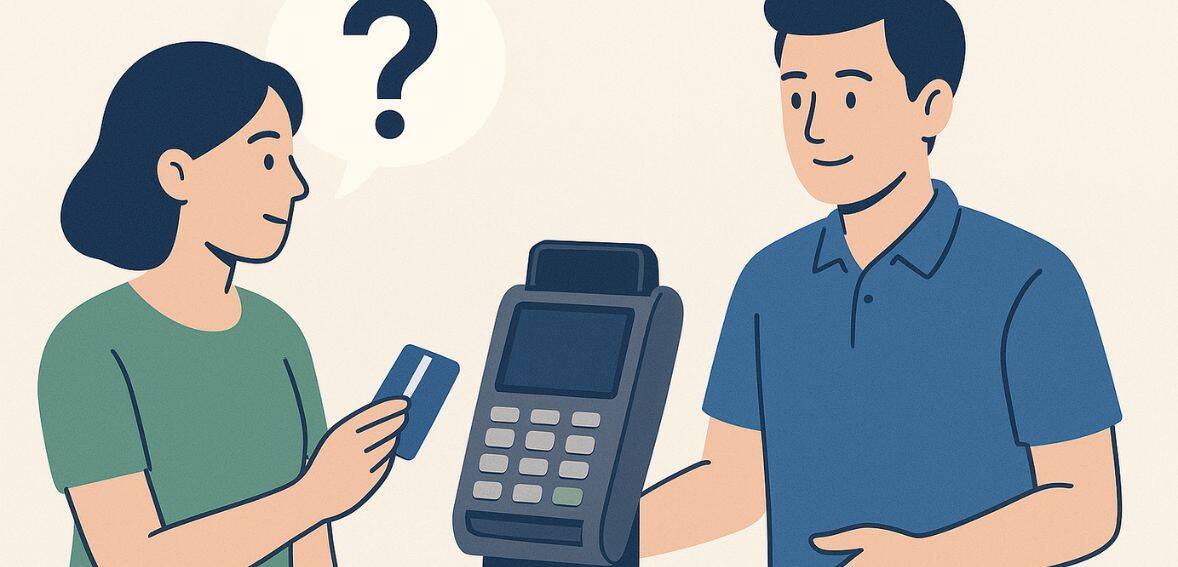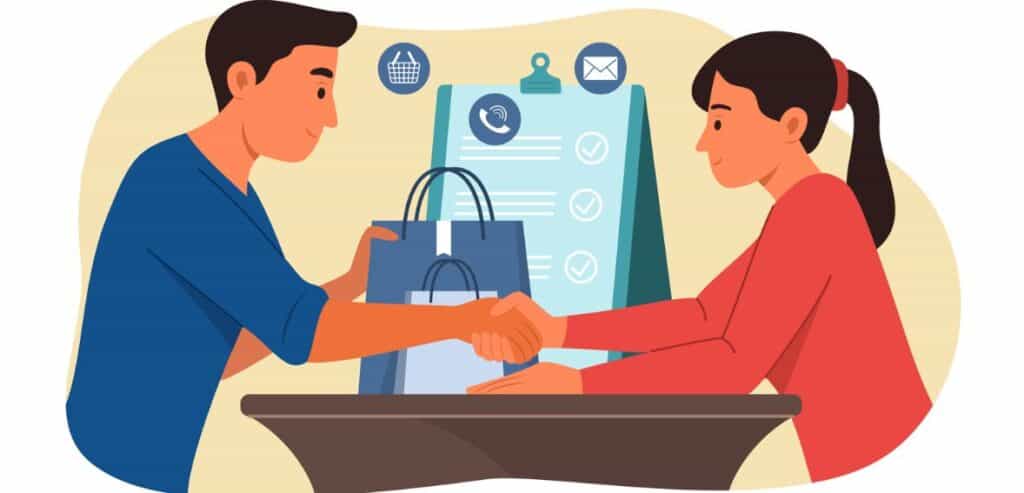
By get-ebt August 14, 2025
More than just a way to make payments, Electronic Benefit Transfer, or EBT, is a vital means between government assistance programs and the people who rely on them for everyday necessities. The EBT card guarantees access to essentials like groceries and infant formula for millions of Americans.
Customers frequently experience uncertainty regarding eligible purchases, balance checks, or unsuccessful transactions, despite the system’s general simplicity. Such times can be particularly stressful for people who depend on these benefits. In order to address problems and establish enduring client trust, businesses require not only technical expertise but also empathy, patience, and clear communication.
Why EBT Questions Matter for Customer Service

With its quick, safe, and dependable method of obtaining food assistance and other benefits, Electronic Benefit Transfer (EBT) has become a vital tool for millions of households in the US. More than just providing excellent customer service, retailers, cashiers, and customer support teams must be able to confidently and accurately answer EBT-related inquiries.
This is essential to gaining the trust and satisfaction of customers. However, as anyone who has worked at a service desk or behind a register knows, customers frequently have a variety of questions about how EBT operates, where it can be used, and what to do in the event of an issue. While some of these queries are simple, others call for a more thorough comprehension of rules, guidelines, and system constraints.
Building Confidence Through Clear Communication
The key to addressing EBT inquiries effectively lies in empathy, patience, and clear communication. Groceries, baby formula, and other necessities are frequently purchased by EBT customers, and any delays or misunderstandings can be extremely stressful.
When employees are confident in their ability to respond to inquiries, they not only address pressing problems but also uphold the store’s standing as a friendly, understanding, and informed enterprise. This is why training on EBT rules, payment processes, and troubleshooting is just as important as learning how to run a sale or issue a refund.
Helping Customers Understand Eligible Purchases

Knowing what products qualify for purchase with EBT benefits is one of the most frequent areas of confusion for consumers. The details can be challenging, but the fundamental principle—that EBT covers the majority of food items for home preparation—is straightforward enough. Customers might inquire as to why certain beverages are eligible while others are not, or why they can purchase cold sandwiches but not hot prepared meals.
These regulations are established by federal guidelines under the Supplemental Nutrition Assistance Program (SNAP), not by specific retailers. A clear explanation of this distinction can help customers understand that the store is merely adhering to regulations and avoid frustration. Particularly in a busy checkout setting, giving examples and speaking are frequently more effective than quoting policy documents.
Responding to Transaction Errors with Patience
Another common cause of customer inquiries is transaction errors. Customers may feel embarrassed if their transaction is denied, especially if they are positive they are eligible for benefits. The way employees react in these circumstances is crucial. Reassuring the customer that there could be a number of reasons—such as system outages, incorrect PIN entry, or processing delays—and that the problem can frequently be fixed quickly is far more effective than merely saying that the payment didn’t go through.
Instead of simply moving on to the next customer, offering to check the terminal, try the transaction again, or recommending that they check their balance via the helpline for their EBT card demonstrates a willingness to assist.
Guiding Customers on Checking Their Balance
In relation to balances, a lot of EBT cardholders are curious about the quickest method for determining their available balance. Depending on the system used by the store, some receipts automatically print the remaining balance, while others do not.
Employees should be prepared to explain other options, like contacting the number on the card’s reverse, visiting the state’s EBT website, or, if one is available, using a specific EBT mobile app. Customers may see a slightly different amount than they anticipate because balances may not update immediately following a purchase, particularly if there are pending transactions.
Making Split Payments Simple for Shoppers
Split payments, where a customer wishes to use EBT for eligible items and another payment method for the remaining items, are another area that may lead to confusion. Even though a lot of contemporary point-of-sale systems manage this with ease, it is still necessary to clearly explain the procedure, particularly to customers who are unfamiliar with EBT.
By guiding them through the process, such as scanning every item first, processing the EBT payment, and then paying the remaining amount, errors that could cause the line to lag or payment errors can be avoided.
Clarifying Refund and Return Processes

Customers sometimes ask why their balance doesn’t match expectations—especially when transactions are declined or partially processed. A portion of this confusion can stem from hidden EBT transaction fees or processing costs. Being prepared to explain these fees clearly can help prevent frustration and preserve client trust.
Building trust and lowering customer anxiety can be achieved by being open and honest about this timeline and assuring them that the funds will be returned by the program’s regulations.
Providing Information on Where EBT is Accepted
Some EBT users might be looking for advice on how to utilize their benefits in addition to transactional inquiries. Although the majority of supermarkets, grocery stores, and some farmers’ markets accept EBT, other retail establishments may not accept the benefits.
For example, EBT purchases are now permitted at certain convenience stores and online merchants, subject to vendor approval and state involvement. Having up-to-date information on hand enables employees to provide accurate responses rather than letting clients fend for themselves.
Helping Customers Understand Expiration of Benefits
Customers may not always be aware that their EBT benefits have expiration dates. Benefits may be taken out of the account if they are not used for a predetermined amount of time. This may be one of the reasons why customers inquire as to why their available balance is less than what they had anticipated.
The customer will understand that the loss was caused by policy timelines rather than a store or payment system error if these rules are explained in a kind, nonjudgmental manner.
Serving with Empathy and Respect
It takes both knowledge and tact to respond to these kinds of inquiries effectively. For people and families who are struggling financially, EBT benefits frequently serve as a lifeline.
Using the card can be a very intimate and even emotional experience for some people. A customer may inadvertently feel judged or unwelcome if a cashier responds in a hurry or dismissively. However, spending a moment to listen, clarify, and offer assistance can make a good impression that lasts.
Creating a Positive Checkout Experience for EBT

For an EBT customer, the checkout counter can be one of the most stressful aspects of their shopping experience. What ought to be a routine procedure can become more stressful due to the presence of other customers, the speed of transactions, and the anxiety of holding up the line. Companies can facilitate this by making sure employees are taught to process EBT transactions in a composed, discrete, and effective manner.
Simple gestures like gently explaining when a non-eligible item appears in the cart or silently confirming eligible items rather than making a loud announcement go a long way toward making customers feel valued. Employees who are able to foresee common misunderstandings, like the requirement for split payments, and patiently walk clients through them, are also beneficial.
A smooth and considerate checkout experience not only resolves immediate issues but also encourages customers to return, knowing they will be treated with dignity and understanding.
The Role of Training and Technology in Better Service

In order for employees to confidently answer inquiries from EBT customers, training is crucial. In addition to technical instruction, this training should incorporate role-playing exercises so that staff members can practice politely and effectively handling common concerns.
Since EBT regulations can differ slightly from state to state and are occasionally modified to reflect policy changes or emergency relief measures, it should also include updates whenever regulations change. Technology can help close knowledge gaps in an era that is becoming more and more digital.
Confusion is decreased by point-of-sale systems with unambiguous prompts, customer-facing displays that highlight eligible items, and receipts that make it obvious how much is left on the balance. Similarly, store informational signage, like little posters by checkout lanes outlining EBT eligibility categories, can address frequently asked questions before they even need to be asked.
Turning Questions into Opportunities
In the end, responding to frequently asked EBT customer questions involves more than simply following the rules; it also entails offering a service that upholds each client’s dignity. Businesses can foster an atmosphere where EBT customers feel appreciated, knowledgeable, and secure about their shopping experience by fusing product expertise with empathy.
This strategy not only fixes issues right away, but it also fosters community understanding and inclusivity, increases customer loyalty, and enhances the store’s reputation. The best approach to answering EBT questions is to view them as chances to connect, educate, and help rather than as disruptions.
Every interaction is an opportunity to demonstrate that every customer, regardless of payment method, is valued equally by the company. Every interaction is a chance to show that the business values every shopper equally, regardless of how they pay. For many customers, that small act of understanding can turn an ordinary grocery trip into a moment where they feel seen, respected, and supported.
Conclusion
Businesses’ general approach to customer care can be inferred from the way they handle EBT customer inquiries. Every discussion is a chance to establish a connection, regardless of whether it concerns a rejected transaction or the processing time for a refund.
When employees handle these situations with empathy, clarity, and patience, they foster an atmosphere where clients feel free to ask questions and are assured of receiving insightful responses.
Customers are more likely to return to establishments where they feel valued and understood, so this trust can result in enduring loyalty. In the end, answering questions about EBT is about more than just clarifying regulations or resolving technical difficulties; it’s about ensuring that everyone who enters the building feels appreciated, regardless of how they choose to pay.
By blending accurate information with genuine kindness, businesses can ensure their service leaves a positive impact long after the transaction is complete.